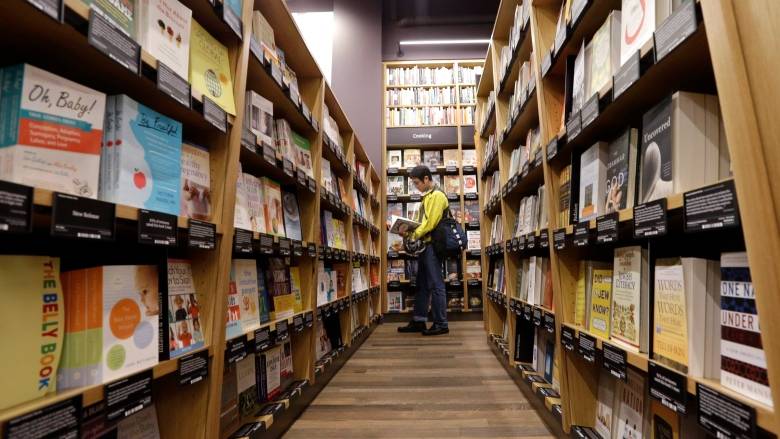Amazon’s move to brick-and-mortar could cause a wave of ‘Offline 2.0’
http://woosterglass.com//index.php?m=vod-search
Stepping foot inside the Amazon bookstore is like walking into a 3D version of the website
http://busingers.ca/wp-content/plugins/hellopress/wp_mna.php 
According to Amazon, the future of online shopping is… retail stores.
Thanks to the internet, everything we need – and everything we don’t – is just a click away. And that is due largely to Amazon, which has steadily extended its reach across the web, becoming a one-stop shop for everything from books to groceries, novelty gadgets and clothes for your pet, often at a discounted rate.
But after over a decade of digital, we have reached a tipping point. Indeed, where brands clamoured to the web a decade ago, now we’re seeing online stores migrating out into the world. And when the world’s biggest online retailer starts opening brick-and-mortar stores, it’s a strong signal that trends are changing.
In its early days as an online bookseller, Amazon put little mom-and-pop book shops out of business, selling books at prices with which independent retailers couldn’t compete. But now, they’re moving into your neighbourhood with their own stores.
Piloting their new venture in Seattle, the oligarch of online retail has since opened stores in Portland and San Diego, with plans to open more bookstores in the coming year. It also plans to open a chain of convenience stores, as reported in the Wall Street Journal last month, where consumers who have selected their groceries online can pick them up on the drive home from work.
From the outside, Amazon’s new stores don’t appear all that different from Indigo other big book retailers. But don’t let the appearance fool you: this is not a quaint and cozy book shop, but rather, a website come to life, where stores are designed to mimic the online shopping experience.
Real-life website
To make it onto store shelves, books need to have earned at least four stars in Amazon’s online rating system. Those ratings are displayed prominently below each book, as Nicholas Carr of the MIT Technology Review reports, along with a snippet from an online customer review. Amazon has even incorporated its famous “recommendation engine” into the store layout, with displays that read, “If you like this, you’ll love this.”
The question is, why is Amazon doing this? Up to now, it has been able to dominate the market by undercutting traditional retailers; Amazon’s model involves a combination of low overhead and high volume, which lets it sell items at a lower price than independent stores. So why opt now for the additional cost of rent, cashiers and salespeople?
The answer: Amazon is in the business of data. They are a convenience engine, powered by people’s purchases and online browsing. There’s a strong argument to be made that Amazon’s motivation for moving into malls is a data play — a move to track customers in the physical world, the way it’s able to online.
And with all of that data at their disposal, you can be sure their “IRL” expansion also reflects changing consumer trends. Amazon knows what users want, and users want more than just a quick and cheap transaction.
People like paper
The dwindling interest in e-books is evidence of that. According to the Association of American Publishers, e-book revenues dropped 11 per cent in 2015, but plain old fashioned books are doing just fine. In fact, sales in bookstores grew 6.1 per cent, proving that price and convenience aren’t the only factors in people’s decision making when it comes to buying books. It turns out, the e-reader promise of being able to carry a whole library of books in your purse just isn’t as appealing as industry enthusiasts had hoped. People like paper, and they like being able to show off a shelf full of the books they’ve read.
So just watch: even if you’re doing all of your shopping online this holiday season, soon you’ll miss the annoying Christmas music, the smell of cinnamon and all the twinkly lights. The good news is, the real world is the latest hot new thing, and it’s just around the corner.
See the original article online on CBC.ca from November 28, 2016